#Fellini: a director’s notebook
Text

#gif#gifmovie#film#movie#vintage#federico fellini#fellini#Fellini A Director's Notebook#reaction#reaction gif
95 notes
·
View notes
Text
Screen Time, Take 5: A Blast From The Past
My college girlfriend asked me to watch Fellini’s La Strada with her one night. A professor from the theater department had assigned it for a class I’m sure was spent forcing students to walk across the room pretending to be tigers or as if moving through Jell-O before discussing a Samuel Beckett play they all had skimmed that week. I agreed to watch the movie. Of course, I owned a two-disc DVD copy of the La Strada and, of course, in the two years since I bought it, had failed to watch it. My Fellini phase started at 16 because Roger Ebert said I had to like La Dolce Vita (I saw it, hated it, pretended to like it for years), and solidified when a cool, attractive person I never ended up dating told me her favorite movie was 8 1/2, a movie that rewired my brain so that I only liked that movie and no other movie for about 5 months. Certainly, La Strada would be somewhere in the middle?
It isn’t. But that didn’t stop my girlfriend and I from popping in the second disc after we’d muscled our way through it to see a special feature with Martin Scorsese saying “this movie is good” for 40 minutes over clips of the movie we had finished watching five minutes prior.
“I don’t like how it’s dubbed.” I said.
“It’s the commedia dell’arte,” she said as I brewed a giant travel mug’s worth of coffee at my dorm room desk. This was before K Cups. I had a big tub of grounds and a machine that made one travel mug’s worth of coffee in my room so that I could wake up five minutes before class, and be caffeinated by the end of my morning power walk to Olin Hall. I also found that I needed caffeine in the evenings to get through any movie screening or exhausting conversations with other Bard students.
“OK. Yes. I get that.” I put the disk in the DVD player and sat back down in the maroon Dorito-dust-covered papasan. I poured powdered creamer into the mug and hit the button on the remote to hear what Scorsese had to say.
“La Strada is about commedia dell’arte.” he said to the documentarian.
“Hmm.” My girlfriend looked at me and then wrote ‘commedia dell’arte’ in her notebook. I rolled my eyes. She had recently learned about a subject, told me about it, heard the subject mentioned back to her, and wanted to make sure I heard that she was right about the thing that she said because now a professional director was saying it back to us from a screen. She often gave this affected performance of making sure I heard something she’d said before repeated by a friend at a party or a professor. It irked me but it was far from her most annoying habit (the incessant cheating).
There are several ways I would have reacted differently now. First, I would have remembered to bring my travel mug to the cafeteria so I could bring better coffee back to the dorm that evening. Second, I wouldn’t have scoffed at a person who knew a fact, heard the fact repeated, and took pleasure in acknowledging “Yes. I know that fact.” This moment of satisfaction is one of the rare pleasures a smart person gets to have.
Who doesn’t love already knowing stuff? It feels great. At a party “yes, anding” someone who said a fact you also know from a Bill Bryson book you both read? Or hearing someone repeat a snippet from RadioLab and finishing their sentence? That’s a true nerdy connection. It’s the same feeling I get when I read a history book and see an event I memorized the name of in high school and finally gain a real understanding of said event now that I have the patience to read and comprehend a modicum of historical context. Is there a word for that? For seeing something you’re familiar with in passing and then retracing your steps to find out more information, or even information you already knew? Not self-satisfied smugness, like someone who says “hmm” after your boyfriend’s hero repeats a phrase on a DVD extra. Not confirmation bias exactly. I mean the joy of watching a Ken Burns documentary and when the narrator mentions The Teapot Dome Scandal, your brain lights up and says “The Teapot Dome Scandal. We know about The Teapot Dome scandal. Hmm. Yes.” I swear, this feeling must have a name. It’s on the tip of my tongue.
Read the rest here
#reading#writing#creative writing#essays#personal essay#amreading#review#movies#books#monsters#writers#funny#memory#idioms#language#dan wilbur
4 notes
·
View notes
Text
The Couple Next Door’s Kiss Scene Right Out of “The Notebook” 🎬


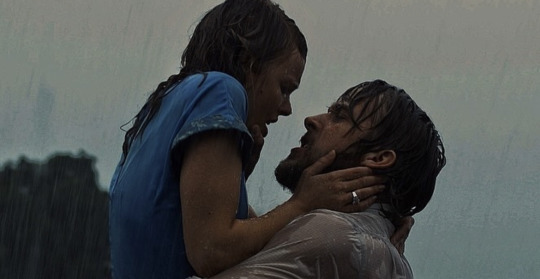
It's a bit difficult to understand. It's supposedly the director's touch that brings something different to each film. But this scene seems like more than just a touch of #thenotebook. There is nothing original in that. The Couple Next Door‘s kiss scene mirrors the scene that occurred in "The Notebook," a 2004 film 🎬 directed by #Nick Cassavetes in many aspects.
It's called influence. Filmmakers do it. The point is whether the filmmaker can give a different touch to the scene. If not, it turns out as a blatant rip-off.
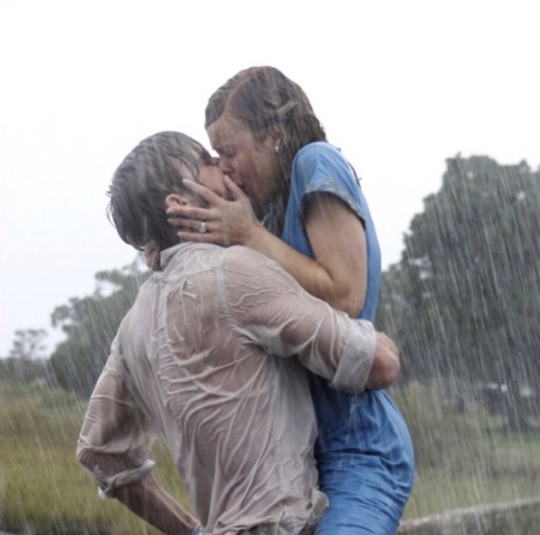
#thenotebook
Everybody learns from someone, but you always need to give it your touch and don't just copy the scene blindfolded. He recreated the scene to look authentic to the event it was based on, but it is not clear what approach @driesvos could add to the scene in the #thecouplenextdoor series to make it different from the original scene of the film.

#thecouplenextdoor
There are plenty of other examples:
This scene from Pulp Fiction is copied from an older film. The inspiration behind it is a scene from Jean-Luc Godard's Bande à part and also borrowed from Fellini’s masterpiece: 8 1/2, but Quentin Tarantino adds his touch to the scene and It turns out to be one of the best scenes.

but I think you get the idea.
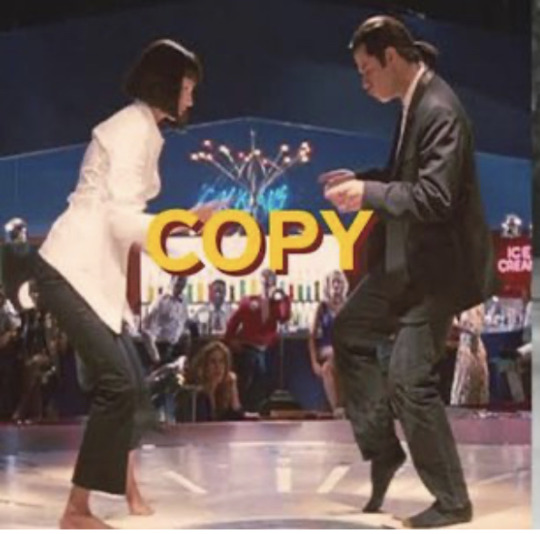
Now check this out:

This is an action sequence of a Bollywood film (below ) Awara Paagal Deewana (transl. Wayward, Crazy, Insane) an Indian film that shamelessly copies the Matrix scene (above) point to point without even trying to make it look any different and turns out one of the stupidest scenes in the film.
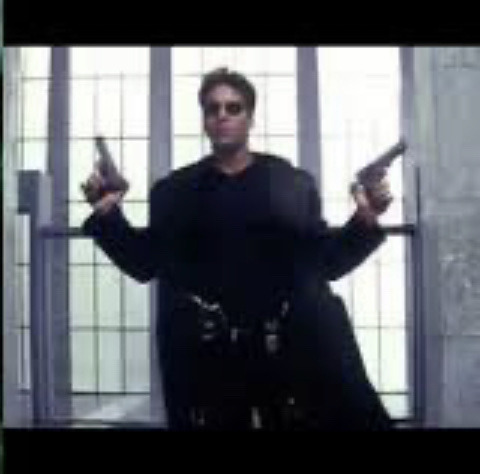
#thenotebook #thecouplenextdoor #film #series ##NickCassavetes
3 notes
·
View notes
Photo
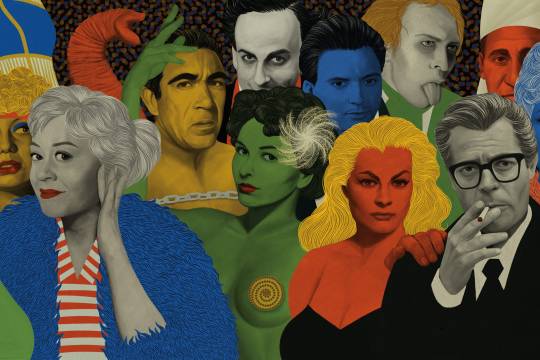

FIFTEEN-BLU-RAY SPECIAL EDITION COLLECTOR’S SET FEATURES
New 4K restorations of 11 theatrical features, with uncompressed monaural soundtracks for all films
New digital restorations of the short film Toby Dammit (1968) and the television film Fellini: A Director’s Notebook (1969), with uncompressed monaural soundtracks
Feature documentaries Fellini: I’m a Born Liar (2002) and Marcello Mastroianni: I Remember (1997), the latter presented in its 193-minute version
Two-hour, four-part 1960 interview with director Federico Fellini by filmmaker André Delvaux for Belgian television
Four behind-the-scenes documentaries: Reporter’s Diary: “Zoom on Fellini” (1965), Ciao, Federico! (1969), The Secret Diary of “Amarcord” (1974), and Fellini racconta: On the Set of “And the Ship Sails On” (1983)
Fellini racconta: Passegiatte nella memoria, a 2000 documentary featuring interviews with a late-in-life Fellini
Giulietta Masina: The Power of a Smile, a 2004 documentary about Fellini’s wife and frequent collaborator
Once Upon a Time: “La dolce vita,” a French television documentary about the film
Audio commentaries on six of the films
Program from 2003 on Fellini's 1980s television advertising work
Archival interviews with Fellini stars and collaborators, including Mastroianni, Sandra Milo, Anouk Aimée, and Magali Noël
Archival audio interviews by film critic Gideon Bachmann with Fellini, Mastroianni, and Fellini's friends and family
Video essays, trailers, and more
PLUS: Deluxe packaging, including two lavishly illustrated books with hundreds of pages of content: notes on the films by scholar David Forgacs, essays by filmmakers Michael Almereyda, Kogonada, and Carol Morley; film critics Bilge Ebiri and Stephanie Zacharek; and novelist Colm Tóibín, and dozens of images spotlighting Don Young’s renowned collection of Fellini memorabilia
#federico fellini#criterion collection#i will save all my money bc i need this#i was sure something like this was in the works#but i was getting anxious it would't happen#i think only#8 1⁄2#amarcord#and la dolce vita#got proper restoration treatment#i am looking forward seeing the restored giulietta degli spiriti#this news totally made my day#toby dammit restoration yes!#also a director's notebook which was only previously available in the shittiest of versions#so much to look forward to#all the bts features#the interviews#a giulietta doc#interviews with marcello and anouk#thank you criterion
3 notes
·
View notes
Text

Fellini: A Director’s Notebook (1969)
17 notes
·
View notes
Photo
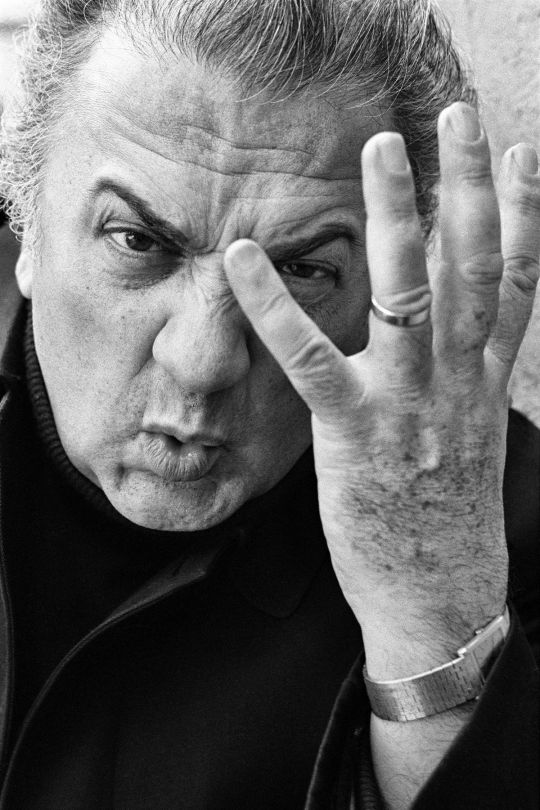
Federico Fellini, Cavaliere di Gran Croce OMRI, was born on January 20, 1920 in Rimini, then a small town on the Adriatic Sea. He was an Italian film director and screenwriter known for his distinctive style, which blends fantasy and baroque images with earthiness. He is recognized as one of the greatest and most influential filmmakers of all time. His films have ranked highly in critical polls such as that of Cahiers du cinéma and Sight & Sound, which lists his 1963 film 8 1⁄2 as the 10th-greatest film.
For La Dolce Vita Fellini won the Palme d'Or, was nominated for twelve Academy Awards, and won four in the category of Best Foreign Language Film, the most for any director in the history of the Academy. He received an honorary award for Lifetime Achievement at the 65th Academy Awards in Los Angeles. His other well-known films include La Strada (1954), Nights of Cabiria (1957), Juliet of the Spirits (1967), the "Toby Dammit" segment of Spirits of the Dead (1968), Fellini Satyricon (1969), Roma (1972), Amarcord (1973), and Fellini's Casanova (1976).
Personal and highly idiosyncratic visions of society, Fellini's films are a unique combination of memory, dreams, fantasy and desire. The adjectives "Fellinian" and "Felliniesque" are "synonymous with any kind of extravagant, fanciful, even baroque image in the cinema and in art in general". La Dolce Vita contributed the term paparazzi to the English language, derived from Paparazzo, the photographer friend of journalist Marcello Rubini (Marcello Mastroianni).
Contemporary filmmakers such as Tim Burton, Terry Gilliam, Emir Kusturica, and David Lynch have cited Fellini's influence on their work.
Polish director Wojciech Has, whose two best-received films, The Saragossa Manuscript (1965) and The Hour-Glass Sanatorium (1973), are examples of modernist fantasies, has been compared to Fellini for the sheer "luxuriance of his images".
I Vitelloni inspired European directors Juan Antonio Bardem, Marco Ferreri, and Lina Wertmüller and influenced Martin Scorsese's Mean Streets (1973), George Lucas's American Graffiti (1974), Joel Schumacher's St. Elmo's Fire (1985), and Barry Levinson's Diner (1982), among many others. When the American magazine Cinema asked Stanley Kubrick in 1963 to name his ten favorite films, he ranked I Vitelloni number one.
Nights of Cabiria was adapted as the Broadway musical Sweet Charity and the movie Sweet Charity (1969) by Bob Fosse starring Shirley MacLaine. City of Women was adapted for the Berlin stage by Frank Castorf in 1992.
8 1⁄2 inspired, among others, Mickey One (Arthur Penn, 1965), Alex in Wonderland (Paul Mazursky, 1970), Beware of a Holy Whore (Rainer Werner Fassbinder, 1971), Day for Night (François Truffaut, 1973), All That Jazz (Bob Fosse, 1979), Stardust Memories (Woody Allen, 1980), Sogni d'oro (Nanni Moretti, 1981), Parad Planet (Vadim Abdrashitov, 1984), La Pelicula del rey (Carlos Sorin, 1986), Living in Oblivion (Tom DiCillo, 1995), 8 1⁄2 Women (Peter Greenaway, 1999), Falling Down (Joel Schumacher, 1993), and the Broadway musical Nine (Maury Yeston and Arthur Kopit, 1982). Yo-Yo Boing! (1998), a Spanish novel by Puerto Rican writer Giannina Braschi, features a dream sequence with Fellini inspired by 8 1⁄2.
Fellini's work is referenced on the albums Fellini Days (2001) by Fish, Another Side of Bob Dylan (1964) by Bob Dylan with Motorpsycho Nitemare, Funplex (2008) by the B-52's with the song Juliet of the Spirits, and in the opening traffic jam of the music video Everybody Hurts by R.E.M. American singer Lana Del Rey has cited Fellini as an influence. His work influenced the American TV shows Northern Exposure and Third Rock from the Sun. Wes Anderson's short film Castello Cavalcanti (2013) is in many places a direct homage to Fellini.
Various film-related material and personal papers of Fellini are in the Wesleyan University Cinema Archives, to which scholars and media experts have full access. In October 2009, the Jeu de Paume in Paris opened an exhibit devoted to Fellini that included ephemera, television interviews, behind-the-scenes photographs, Book of Dreams (based on 30 years of the director's illustrated dreams and notes), along with excerpts from La dolce vita and 8 1⁄2.
In 2015, the Blue Devils Drum and Bugle Corps of Concord, California, performed "Felliniesque", a show themed around Fellini's work, with which they won a record 16th Drum Corps International World Class championship with a record score of 99.650. That same year, the weekly entertainment-trade magazine Variety announced that French director Sylvain Chomet was moving forward with The Thousand Miles, a project based on various Fellini works and first developed with Demian Gregory and Tommaso Rossellini, including his unpublished drawings and writings.
Filmography
As a director
1950 Variety Lights co-credited with Alberto Lattuada
1952 The White Sheik
1953 I vitelloni
1953 Love in the City Segment: Un'agenzia matrimoniale
1954 La strada
1955 Il bidone
1957 Nights of Cabiria
1960 La Dolce Vita
1962 Boccaccio '70 Segment: Le tentazioni del Dottor Antonio
1963 8 1⁄2
1965 Juliet of the Spirits
1968 Spirits of the Dead Segment: Toby Dammit
1969 Fellini: A Director's Notebook
1969 Fellini Satyricon
1970 I Clowns
1972 Roma
1973 Amarcord
1976 Fellini's Casanova
1978 Orchestra Rehearsal
1980 City of Women
1983 And the Ship Sails On
1986 Ginger and Fred
1987 Intervista
1990 The Voice of the Moon
As a screenwriter
1942 Knights of the Desert
1942 Before the Postman
1943 The Peddler and the Lady
1943 L'ultima carrozzella Co-scriptwriter
1945 Tutta la città canta Co-screenwriter and story author
1945 Rome, Open City Co-scriptwriter
1946 Paisà Co-scriptwriter
1947 Il delitto di Giovanni Episcopo Co-scriptwriter
1948 Senza pietà Co-scriptwriter
1948 Il miracolo Co-scriptwriter
1949 Il mulino del Po Co-scriptwriter
1950 Francesco, giullare di Dio Co-scriptwriter
1950 Il Cammino della speranza Co-scriptwriter
1951 La città si difende Co-scriptwriter
1951 Persiane chiuse Co-scriptwriter
1952 Il brigante di Tacca del Lupo Co-scriptwriter
1958 Fortunella Co-scriptwriter
1979 Lovers and Liars Fellini not credited
Television commercials
TV commercial for Campari Soda (1984)
TV commercial for Barilla pasta (1984)
Three TV commercials for Banca di Roma (1992)
Documentaries on Fellini
Ciao Federico (1969). Dir. Gideon Bachmann. (60')
Federico Fellini - un autoritratto ritrovato (2000). Dir. Paquito Del Bosco. (RAI TV, 68')
Fellini: I'm a Born Liar (2002). Dir. Damian Pettigrew. Feature documentary. (Arte, Eurimages, Scottish Screen, 102')
How Strange to Be Named Federico (2013). Dir. Ettore Scola.
Fellini died in Rome on 31 October 1993 at the age of 73 after a heart attack he suffered a few weeks earlier, a day after his 50th wedding anniversary. The memorial service, in Studio 5 at Cinecittà, was attended by an estimated 70,000 people. At Giulietta Masina's request, trumpeter Mauro Maur played Nino Rota's "Improvviso dell'Angelo" during the ceremony.
Five months later, on 23 March 1994, Masina died of lung cancer. Fellini, Masina and their son, Pierfederico, are buried in a bronze sepulchre sculpted by Arnaldo Pomodoro. Designed as a ship's prow, the tomb is at the main entrance to the Cemetery of Rimini. The Federico Fellini Airport in Rimini is named in his honour.
Daily inspiration. Discover more photos at http://justforbooks.tumblr.com
33 notes
·
View notes
Link
Federico Fellini (* 20. Januar 1920 in Rimini; † 31. Oktober 1993 in Rom) war ein italienischer Filmemacher und gilt als einer der wichtigsten Autorenfilmer des 20. Jahrhunderts. (Wikipedia)
Deutschlandfunk Kultur : Hommage an einen Meisterregisseur
MDR Kultur: Vor 100 Jahren geboren: Meister-Regisseur Federico Fellini
Welt: Amore ist ein Kinderspiel
youtube
The Films of Federico Fellini
"A tribute to Maestro". Federico Fellini is one of the greatest filmmakers in history. His works have influenced many filmmakers all around the world.
The Films:
Luci del varietà (1950) (co-credited with Alberto Lattuada)
Lo sceicco bianco (1952)
I vitelloni (1953)
L'amore in città (1953) (segment Un'agenzia matrimoniale)
La strada (1954)
Il bidone (1955)
Le notti di Cabiria (1957)
La Dolce Vita (1960)
Boccaccio '70 (1962) (segment Le tentazioni del Dottor Antonio)
8½ (1963)
Giulietta degli spiriti (1965)
Histoires extraordinaires (1968) (segment Toby Dammit, based on Edgar Allan Poe's short story "Never Bet the Devil Your Head")
Fellini: A Director's Notebook (1969)
Fellini Satyricon (1969)
I clowns (1970)
Roma (1972)
Amarcord (1973)
Il Casanova di Federico Fellini (1976)
Prova d'orchestra (1978)
La città delle donne (1980)
E la nave va (1983)
Ginger e Fred (1986)
Intervista (1987)
La voce della luna (1990)
Music:
The Barber of Sevilla Overture by Gioachino Rossini (from 8½ ) La Dolce Vita Theme (finale) by Nino Rota Amarcord Theme by Nino Rota Gelsomina Theme by Nino Rota/Tor Jaran Apold (from La Strada)
2 notes
·
View notes
Text
Federico Fellini


'Ciao, Federico!', Gideon Bachman, 1970, VO.
Presenta el proceso de filmación de 'Satiricón' ('Satirycon') en 1969.
'Federico Fellini. Biografía expres', VE.
'Federico Fellini. Biography', bio., VO, SE en YouTube.
'Federico Fellini. Entrevista', 1965, VO, SE en YouTube.
'Federico Fellini. Entrevista', 1972, VO.
'Block-notes di un regista' ('Fellini: A director's notebook'), Federico Fellini, 1969, VO.
Fellini opina sobre como hacer películas y sus procedimientos poco ortodoxos buscando la inspiración en varios sitios.
Durante este film los espectadores van con él al Colisseum de noche, dan un paseo por las catacumbas romanas a la Vía Apia, pasan por un matadero, y hacen una visita a la casa de Marcello Mastroianni.
Fellini también es visto en su propia oficina entrevistando una serie de personajes característicos de sus películas.

‘Qué extraño llamarse Federico’ (’Che strano chiamarsi Federico!’), Ettore Scola, Paola Scola, Silvia Scola, 2013, VO.
Rinde homenaje al director italiano Federico Fellini para conmemorar el vigésimo aniversario de su muerte combinando imágenes de archivo y escenas rodadas en Cinecittà.
Ettore Scola evoca su encuentro con él en la revista satírica Marc’Aurelio en los años cincuenta, recuerda los amigos comunes, entre ellos Marcello Mastroianni, y, sobre todo, el placer compartido de hacer cine.
'Adiós a Federico Felllini', RTVE, 1993, VE.

0 notes
Text
Dreamscapes
Channeling dreams to create new worlds

Stalker, Andrei Tarkovsky (1979)
In Chip Sullivan’s new book, Cartooning the Landscape, he argues that anything is possible during dreams and that this wellspring of creativity should be utilized by designers to generate unique and innovative landscape typologies. Dreams can also provide a space in which environmental designers can test and execute design concepts free of constraint. In a section titled Dreaming the Landscape, Chip illustrates the power of recording and translating our dream states, and includes examples from contemporary landscape designers such as Randy Hester, Cheryl Barton, and David Meyer.
Dreams are also an integral part of cinema, and the term “dream factory” has long been used as a metaphor for the film industry -- a laboratory for filmmakers to test and recreate worlds that are free of earthly limits. Much has been written about the similarities between the world found in our dreams and the world depicted on screen. Many filmmakers including David Lynch, Jean Cocteau, and Andrei Tarkovsky have garnered reputations for their ability to construct environments that exist in this hazy realm of the unconscious. Even Alfred Hitchcock worked with surrealist painter Salvador Dalí to design and film a dream sequence for his 1945 feature Spellbound. Hitchcock and Dalí utilize elongated shadows, fog, skewed camera angles, experimentation with scale and other surreal elements to create a landscape of warped time and perception.
youtube
Dream sequence from Hitchcock’s Spellbound (1945), featuring set design by Salvador Dali, the surrealist known for his unique depiction of dreamworlds.

Fellini on set at Cinecitta
Italian director Federico Fellini has been celebrated for his dreamlike style of filmmaking which found its way into each of his films over his five decade career (~1945-1992). Many of his films include circus-like elements which lend to an artificial atmosphere that is just a step beyond reality. The inspiration for the Fellini’s films came directly from his dreams. In 2008, Rizzoli published the director’s dream notebooks, a treasure trove of recorded dream sketches and descriptions that the director (inspired by the work of Carl Jung) kept by his bed beginning in the early 1960s. These notebooks are beautifully illustrated and fascinating for their direct connection with the dreamscapes Fellini featured in some of his best films from his oneiric period, for example 8 ½ (1963), Juliet of the Spirits (1965), Amarcord (1973), and Casanova (1976).
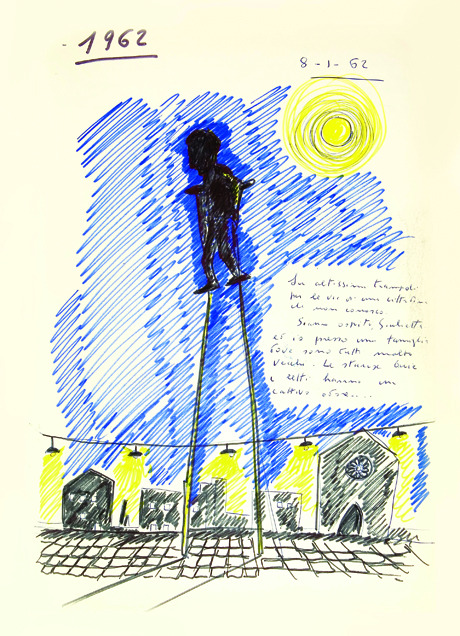
From Fellini’s Brook of Dreams (Rizzoli, 2008)
youtube
Opening dream sequence from Federico Fellini’s 8 ½ (1963), one of the most important films of all time which straddles the line between dreams and waking life
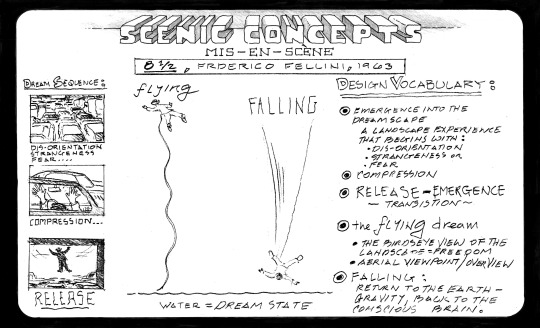
Scenic Concepts: Dream Sequence from 8 1/2. Chip Sullivan, 2017.
In a piece titled Amarcord: Federico of the Spirits, Sam Rohdie, professor of cinema studies at the University of Central Florida, discusses Fellini’s 1973 feature Amarcord (I Remember) as an example of Fellini’s later films, which marked a departure from dramatic, realistic, or traditional narrative structure in turn for a more intuitive, dreamlike cinema:
In Amarcord, the Rex is made of cardboard, the sea of plastic, the sunset of paint. Very little is natural, and when it is, it is parodied and deformed. The natural was not an opportunity for Fellini, material to be recorded or rearranged, but rather a constraint, like rationality, defined order, and logic were—a limit on his creativity—and that is why the natural, the narrativized, and the realistic began to disappear from Fellini’s work, at first imperceptibly, before 1960, and then markedly afterward.
Rohdie goes on to describe how this exploration of a stylized dream world helped the director to innovate new, more ephemeral themes:
Being freed from the constraints of narrative allows not only for a greater range of associations but for filmmaking in which images and sounds and their colors, textures, light, tones, rhythms, and movement can combine and resonate. And in Fellini’s case, these are resonances of joyfulness and generosity.
Fellini’s body of work and the history of motion picture include countless successful examples of dreamscapes that have proven to be popular among audiences across the world. Dream sequences have made their way into cultural memory, becoming archetypes that are constantly analyzed and replicated. Environmental designers should consult these dreamscapes in order to think differently about the fundamental design tools of our trade, for example scale, material, experience, and the more ephemeral or sensory qualities of a landscape like light, sound, and smell.
1 note
·
View note
Text
New from Kevin Wozniak on Kevflix: What’s Streaming this Month? – July
Here are my picks for the best movies coming to Netflix, Prime Video, Hulu, Disney+, Criterion Channel, and HBOMax in July, all of which offer up some incredible titles.
NETFLIX
Full list of everything coming to Netflix in July can be found here.
AIRPLANE! (Jim Abrahams, David Zucker, Jerry Zucker, 1980)
An iconic comedy that still holds up 40-years later.
BATMAN: MASK OF THE PHANTASM (Eric Radomski, Bruce Timm, 1993)
The best Batman animated film and one of the best Batman films ever.
CLOUD ATLAS (Lilly and Lana Wachowski, 2012)
An epic, ambitious film and one of the most underrated movies of the last decade.
MEAN STREETS (Martin Scorsese, 1972)
Martin Scorsese’s breakout is a gritty look at a small-time hoodlum trying to move his way up in the local mob.
MILLION DOLLAR BABY (Clint Eastwood, 2004)
Clint Eastwood’s emotional Best Picture winner features a trio of stellar performances from Eastwood, Hilary Swank, and Morgan Freeman.
THE NOTEBOOK (Nick Casavettes, 2004)
A great cinematic love story.
SCHINDLER’S LIST (Steven Spielberg, 1993)
Steven Spielberg’s masterpiece is one of the greatest pieces of cinema ever created.
SLEEPLESS IN SEATTLE (Nora Ephron, 1993)
One of the greatest romantic comedies ever made.
SPOTLIGHT (Todd McCarthy, 2015)
This disturbing, masterful procedural rightly deserved its Best Picture win in 2015.
THE TOWN (Ben Affleck, 2010)
Ben Affleck’s thrilling crime film is his best work as a director.
TOTAL RECALL (Paul Verhoeven, 1990)
A wild, violent, excellent sci-fi film from the great Paul Verhoeven.
PRIME VIDEO
Full list of everything coming to Amazon Prime Video in July can be found here.
ALI (Michael Mann, 2001)
Will Smith gives one of the best performances of his career in Michael Mann’s captivating, sprawling biopic.
BIG FISH (Tim Burton, 2003)
Tim Burton’s stunning, heartwarming, and strange movie about the father-son bond.
THE DEVIL’S REJECTS (Rob Zombie, 2005)
A delirious, gory film from Rob Zombie.
MIDNIGHT IN PARIS (Woody Allen, 2011)
Woody Allen’s charming, beautiful love note to Paris and artists of the past.
PANIC ROOM (David Fincher, 2002)
It’s on the lower-end of Fincher’s filmography, but this is still a really good and intense movie.
PINEAPPLE EXPRESS (David Gordon Green, 2008)
An iconic stoner comedy featuring Seth Rogen and James Franco and their best and a scene-stealing Danny McBride.
HULU
Full list of everything coming to Hulu in July can be found here.
WAITING FOR GUFFMAN/BEST IN SHOW/A MIGHTY WIND/FOR YOUR CONSIDERATION (Christopher Guest, 1996/2000/2003/2006)
These four movies, all directed by Christopher Guest and written by Guest and Eugene Levy, are top-notch mockumentaries and hilarious comedies.
THE ASSISTANT (Kitty Green, 2020)
This chilling inside look at a Hollywood studio is quietly one of the best movies of 2020.
DOWNHILL RACER (Michael Ritchie, 1969)
Robert Redford and Gene Hackman give two of the best performances of their career in this thrilling, in-depth look at a cocky skier who clashes with his coach while on his way to the Olympics.
FORGETTING SARAH MARSHALL (Nicholas Stoller, 2008)
One of the great comedies of the 21st century.
HOT ROD (Akiva Schaffer, 2007)
An underrated cult comedy.
LIAR LIAR (Tom Shadyac, 1997)
One of Jim Carrey’s best movies and performances.
MOONSTRUCK (Norman Jewison, 1987)
Cher and Nicolas Cage are absolutely delightful in this Oscar-winning romantic dramedy.
MY COUSIN VINNY (Jonathon Lynn, 1992)
One of my favorite comedies ever.
PALM SPRINGS (Max Barbakow, 2020)
This got a lot of buzz at this year’s Sundance Film Festival, so I’m excited to check it out and see what the hoopla is all about.
WEST SIDE STORY (Jerome Robbins, Robert Wise, 1961)
Arguably the greatest musical ever made.
DISNEY+
Full list of everything coming to Disney+ in July can be found here.
THE BIG GREEN (Holly Goldberg Sloan, 1995)
A 90’s Disney sports gem.
HAMILTON (Lin Manuel Miranda, 2020)
One of Broadway’s biggest hits ever is coming to Disney+ with a recording of the show with the original cast. I am very excited to see this as I did not see the play.
INCREDIBLES 2 (Brad Bird, 2018)
Brad Bird waited fourteen years to give us a sequel to his 2004 masterpiece and he didn’t disappoint. Fun, exciting, and full of action, laughs, and deep themes.
THE MIGHTY DUCKS (Stephen Herek, 1992)
A Disney sports classic.
SOLO: A STAR WARS STORY (Ron Howard, 2018)
Not a great Star Wars movie, but has some good stuff in it, particularly Donald Glover as a young Lando Calrissian.
CRITERION CHANNEL
Full list of everything coming to Criterion Channel in July can be found here.
*The Criterion Channel does things a little differently than every other streaming service. The Criterion Channel, a wonderful streaming service that focuses on independent, foreign, and under-appreciates movies, doesn’t just throw a bunch of random movies to stream. They get more creative, by having categories like “DOUBLE FEATURES” or “FILMS FROM…”, giving us curated lists of films that somehow blend together or feature a specific artist.*
CERTAIN WOMEN: Criterion Collection Edition #893 (Kelly Reichardt, 2016)
A top-notch cast of Michelle Williams, Kristen Stewart, Laura Dern, and Lilly Gladstone highlight this beautifully quiet drama from the great Kelly Reichardt.
DOUBLE FEATURES
From Art House to Grindhouse
The Virgin Spring (Ingmar Bergman, 1960)
The Last House on the Left (Wes Craven, 1972)
One of the most interesting double features Criterion has ever had. The Virgin Spring is one of Ingmar Bergman’s most celebrated films, while The Last House on the Left is Wes Craven’s brutal rape-revenge flick. Should make for a wild viewing.
The Hard-Boiled Way
Gun Crazy (Joseph H. Lewis, 1950)
The Big Combo (Joseph H. Lewis, 1955)
Two hard-boiled Joseph H. Lewis film noirs.
Auto Focused
Bullitt (Peter Yates, 1968)
Grand Prix (John Frankenheimer, 1966)
Two classic 60’s action films focused on the thrills behind the wheel.
MARRIAGE STORIES
Over a dozen movies focusing on messy, chaotic, dysfunctional marriages.
Come Back, Little Sheba (Daniel Mann, 1952)
The Bigamist (Ida Lupino, 1953)
Cat on a Hot Tin Roof (Richard Brooks, 1958)
La notte (Michelangelo Antonioni, 1961)
Juliet of the Spirits (Federico Fellini, 1965)
Who’s Afraid of Virginia Woolf? (Mike Nichols, 1966)
Faces (John Cassavetes, 1968)
A Married Couple (Allan King, 1969)
Scenes from a Marriage (Ingmar Bergman, 1973)
California Suite (Herbert Ross, 1978)
Kramer vs. Kramer (Robert Benton, 1979)
5×2 (François Ozon, 2004)
The Squid and the Whale (Noah Baumbach, 2005)
Antichrist (Lars von Trier, 2009)
Certified Copy (Abbas Kiarostami, 2010)
Tuesday, After Christmas (Radu Muntean, 2010)
A Separation (Asghar Farhadi, 2011)
45 Years (Andrew Haigh, 2015)
HBOMAX
Full list of everything coming to HBOMax in July can be found here.
BLADE TRILOGY (Stephen Norrington/Guillermo Del Toro/David S. Goyer, 1998/2002/2004)
Wesley Snipes plays the half human-half vampire superhero in this dark and bloody comic book trilogy.
BLAZING SADDLES (Mel Brooks, 1974)
A legendary comedy and maybe the best film of Mel Brooks career.
CATCH ME IF YOU CAN (Steven Spielberg, 2002)
Underrated in the Spielberg cannon, Catch Me If You Can is a fun, twisty, expertly crafted con movie featuring a pair of great performances from Leonardo DiCaprio and Tom Hanks.
THE DEPARTED (Martin Scorsese, 2006)
Martin Scorsese won his long-overdue Oscar for this cat-and-mouse crime film about a cop who infiltrates the mob and how a mobster infiltrates the police.
THE EXORCIST (William Friedkin, 1973)
The greatest horror movie ever made and one of the greatest films ever made, period.
MAGNOLIA (Paul Thomas Anderson, 1999)
Paul Thomas Anderson’s wildly ambitious L.A. tale is one I’ve been itching to rewatch.
MARS ATTACKS! (Tim Burton, 1998)
Tim Burton channel’s 50’s schlock films with this star-studded alien invasion movie.
SAVING PRIVATE RYAN (Steven Spielberg, 1998)
Steven Spielberg’s World War II masterpiece features one of the greatest opening scenes I have ever seen.
SUPERMAN I-IV/SUPERMAN RETURNS (Richard Donner/Richard Lester/Sidney J. Furie/Bryan Singer, 1978/1980/1983/1987/2006)
It’s going to be a lot of fun to give these ones a rewatch. Christopher Reeve is a pitch-perfect Man of Steel and Superman Returns doesn’t get the love it deserves.
UNFORGIVEN (Clint Eastwood, 1992)
Clint Eastwood’s crowning achievement as a director and one of the best Western’s ever made.
Follow Kevflix on Twitter and Instagram, @kevflix, and on Facebook by searching Kevflix.
The post What’s Streaming this Month? – July appeared first on Kevflix.
from Kevflix https://ift.tt/3dRQatY
via IFTTT
from WordPress https://ift.tt/2NMbp62
via IFTTT
0 notes
Text
CCBB recebe retrospectiva completa do cineasta Federico Fellini
Que tal rever toda a obra do mestre italiano Federico Fellini? Essa oportunidade é sua, jovem, com a mostra em homenagem aos 100 anos de nascimento do cineasta que rola no CCBB São Paulo.
Intitulada de “Fellini, Il Maestro“, a retrospectiva é uma oportunidade única de assistir, na sala de cinema, vários clássicos do cinema mundial, de mergulhar no mundo felliniano, com suas histórias e personagens fascinantes.
Ao todo, são apresentados 24 títulos, desde o filme de estreia de Fellini, “Mulheres e Luzes” (1950), codirigido com Alberto Lattuada, até o último deles, “A Voz da Lua” (1990), incluindo obras-primas estreladas por parceiros constantes como Marcello Mastroianni e Giulietta Masina, sua esposa, e embaladas pela música de Nino Rota.
A mostra também exibe no CCBB o documentário “Fellini: A Director’s Notebook” (1969), no qual o próprio Fellini comenta seu processo de trabalho e passeia por seus lugares preferidos em Roma.
QUE TAL UM CINEMINHA A R$ 8 NAS POLTRONAS DA CINESALA?
Todas as sessões têm entrada gratuita e acontecem de 26 de fevereiro a 23 de março, de quarta a segunda-feira, entre 9h e 21h – os horários você confere abaixo.
E tem mais! A programação do CCBB São Paulo ainda oferece outras atividades gratuitas, com foco na obra de Fellini, como o debate, no dia 12 de março, com a presença dos críticos Neusa Barbosa e Felipe Furtado.
Nos dias 16, 18 e 19 de março, você pode aproveitar um curso ministrado por Felipe Furtado. As inscrições para o curso devem ser feitas pelo e-mail [email protected].
Quem foi Federico Fellini?
Federico Fellini é reconhecido como um dos maiores e mais influentes cineastas de todos os tempos, cujos filmes, que trazem um olhar altamente pessoal e idiossincrático sobre a sociedade, são uma combinação única de memória, sonhos, fantasia e desejo.
O adjetivo felliniano é sinônimo de qualquer tipo de imagem extravagante, barroca ou fantasiosa no cinema ou na arte em geral. “A Doce Vida” lançou um novo termo: paparazzi, derivado de Paparazzo, o fotógrafo amigo do jornalista Marcello Rubini, vivido por Mastroianni.
Fellini morreu em Roma, em 31 de outubro de 1993, ao 73 anos, de ataque cardíaco, um dia depois da celebração dos 50 anos de casamento com Giulietta Masina. O funeral, no Estúdio 5 da Cinecittà, seu favorito, atraiu 70 mil pessoas.
Programação de ‘Fellini, Il Maestro’ no CCBB:
26/02 – Quarta
17h Mulheres e Luzes
19h30 Ensaio de Orquestra
27/02 – Quinta
16h A Cidade das Mulheres
19h Os Boas Vidas
28/02 – Sexta
16h Casanova de Fellini
19h30 Os Palhaços
29/02 – Sábado
16h Ensaio de Orquestra
18h30 Amarcord
1º/03 – Domingo
15h30 Noites de Cabíria
18h Oito e Meio
2/03 – Segunda
15h Bocaccio 70
19h30 Os Palhaços
4/03 – Quarta
17h A Director`s Notebook
18h30 Satyricon de Fellini
5/03 – Quinta
16h Histórias Extraordinárias
19h Roma
6/03 – Sexta
16h30 Mulheres e Luzes
19h Amarcord
7/03 – Sábado
15h30 A Cidade das Mulheres
18h30 Ginger e Fred
8/03 – Domingo
16h A Director`s Notebook
18h Satyricon de Fellini
9/03 – Segunda
16h30 Ginger e Fred
19h Noites de Cabíria
11/03 – Quarta
16h Amarcord (sessão inclusiva Gratuita – audiodescrição, legenda descritiva, Libras)
19h Os Boas Vidas
12/03 – Quinta
14h30 Julieta dos Espíritos
17h Entrevista
19h Debate Fellini
13/03 – Sexta
16h A Estrada da Vida
18h30 Oito e Meio
14/03 – Sábado
16h A Voz da Lua
18h30 Roma
15/03 – Domingo
15h Histórias Extraordinárias
17h30 A Doce Vida
16/03 – Segunda
14h Curso Fellini – Dia 1
16h Amores na Cidade
18h30 Casanova de Fellini
18/03 – Quarta
14h Curso Fellini – Dia 2
16h30 A Voz da Lua
19h Entrevista
19/03 – Quinta
14h Curso Fellini – Dia 3
16h30 E la Nave Va
19h A Estrada da Vida
20/03 – Sexta
16h Casanova de Fellini
19h30 Abismo de Um Sonho
21/03 – Sábado
16h A Trapaça
18h30 Julieta dos Espíritos
22/03 – Domingo
15h E La Nave Va
17h30 A Doce Vida
23/03 – Segunda
16h A Trapaça
19h30 Abismo de Um Sonho
Peraí, que tem mais cinema pra você aqui:
Veja também: SP ganha complexo de cinema pra ninguém botar defeito
Veja também: 9 cinemas de rua em SP para fugir da programação ‘Blockbuster’
A Catraca Livre leva para as ruas a campanha #CarnavalSemAssédio, que visa acabar com abusos durante a folia. Com a parceria da Rua Livre e da Prefeitura de São Paulo e apoio da 99, além de conteúdos que promovem o debate sobre o problema, a campanha criou a ação Anjos do Carnaval, que oferece orientação, acolhimento e atendimento psicossocial a mulheres e LGBTs vítimas de assédio. Vem entender como você pode fazer um #CarnavalSemAssédio!
CCBB recebe retrospectiva completa do cineasta Federico Fellinipublicado primeiro em como se vestir bem
0 notes
Text
Mostra projeta TODOS os filmes de Fellini a preço popular
Sonho, fantasia, desejo, memória e nostalgia. Tudo isso junto e misturado fazem do cineasta italiano Federico Fellini (1920-1993) um dos maiores gênios do cinema mundial! Para comemorar os 100 anos desse mestre, o CCBB Rio de Janeiro exibe TODOS os longas-metragens dirigidos por ele na mostra “Fellini, Il Maestro”. Irado, não? 🎬
Um dos destaques é “A Doce Vida” (1960), um dos longas mais belos e mais conhecidos do diretor. O drama narra a história de Marcello Rubini (interpretado pelo galã Marcello Mastroianni), um jornalista que escreve fofocas sobre celebridades e ricos para tabloides sensacionalistas em Roma. Nesse universo pautado por um vazio existencial, ele conhece a bela Sylvia Rank, uma atriz recém-chegada de Hollywood.
Juntos, Marcello e Sylvia passeiam pela cidade e descobrem um novo sentido para a vida. Nesse rolê, a musa, interpretada por Anita Ekberg, toma um banho com roupa e tudo na famosa Fonte de Trevi em uma das cenas mais icônicas do cinema.
No marcante “Amarcord” (1973), Fellini cria um retrato poético e altamente nostálgico sobre os tempos da infância. Em uma cidade italiana, o jovem Titta sempre apronta com seus amigos e observa as personalidades excêntricas que vivem no local e se comportam de forma absurda.
youtube
Entre as broncas de seu pai severo e o conforto da saia de sua adorada mãe, Titta testemunha a vida familiar, política e religiosa do país nos anos de 1930, quando o fascismo vivia seu ápice. O longa é ganhador do Oscar de melhor filme estrangeiro de 1975.
Outro destaque é o também premiado “8 1/2” (1963), sobre o cineasta Guido Anselmi (vivido por Mastroianni), que está prestes a gravar seu próximo filme, mas ainda não tem ideia de como será a produção. Em crise e pressionado por todos à sua volta, ele se interna em uma estação de águas e vive uma mistura de passado, presente, ficção e realidade.
youtube
Já o premiado “Noites de Cabríria” (1957), que também ganhou o Oscar de filme estrangeiro, narra o drama de uma jovem romântica e ingênua que se prostitui para sobreviver. Ela não deixa sua confiança se abalar mesmo diante das muitas dificuldades da vida e sonha em encontrar um verdadeiro amor.
A mostra ainda exibe “Abismo de um Sonho” (1952), “A Estrada da Vida” (1954), “Casanova de Fellini” (1976), “Julieta dos Espíritos” (1965), “Satyricon” (1969), “Mulheres e Luzes” (1950), “Os Boas Vidas” (1953), “Roma” (1972), “Bocaccio 70” (1962), “Ensaio de Orquestra” (1978), “Cidade das Mulheres” (1980), “A Trapaça” (1955), “Ginger e Fred” (1986), “Entrevista” (1987), “Fellini: A Director’s Notebook” (1969), “A Voz da Lua” (1990) e a série “Histórias Extraordinárias” (1965)
CINEFESTA: CINEMA AO AR LIVRE E FESTINHA NA LAJE DA FUNDIÇÃO PROGRESSO
Curtiu? A mostra “Fellini, Il Maestro” acontece de 8 de janeiro a 3 de fevereiro, com sessões de quarta a segunda em diferentes horários. Os ingressos são vendidos por até R$10.
A programação completa com datas e horários você encontra abaixo:
Dia 8 de janeiro | quarta
17h – “Abismo de Um Sonho” (Itália, 1952). 86 min. Livre.
19h – “Noites de Cabíria” (Itália, 1957). 110 min. Livre.
Dia 9 de janeiro | quinta
15h30 – “A Estrada da Vida” (Itália, 1954). 108 min. Livre.
18h – “A Doce Vida” (Itália, 1960). 174 min. Livre.
Dia 10 de janeiro | sexta
16h – “Histórias Extraordinárias” (Itália/França, 1965) de Federico Fellini, Roger Vadim, Louis Malle. 121 min. Livre.
18h30 – “Julieta dos Espíritos” (Itália, 1965). 137 min. Livre.
Dia 11 de janeiro | sábado
16h – “Abismo de Um Sonho” (Itália, 1952). 86 min. Livre.
18h – “8 1⁄2” (Itália, 1962). 138 min. Livre.
Dia 12 de janeiro | domingo
16h – “A Voz da Lua” (Itália, 1990). 122 min. Livre.
18h30 – “E La Nave Va” (Itália, 1983). 132 min. Livre.
Dia 13 de janeiro | segunda
15h30 – “A Cidade das Mulheres”. “La città delle donne”. De Federico Fellini (Itália/França, 1980). 139 min. Livre.
18h30 – “Casanova de Fellini”. “Il Casanova di Federico Fellini”. De Federico Fellini (Itália, 1976). 155 min. 14 anos.
Dia 15 de janeiro | quarta-feira
17h – “Os Palhaços (Itália/França/Alemanha, 1970. 92 min. Livre.
19h – “A Estrada da Vida” (Itália, 1954). 108 min. Livre.
Dia 16 de janeiro | quinta
15h30 – “Casanova de Fellini” (Itália, 1976). 155 min. 14 anos.
18h30 – “A Voz da Lua” (Itália, 1990). 122 min. Livre.
Dia 17 de janeiro | sexta
16h30 – “E La Nave Va” (Itália, 1983). 132 min. Livre.
19h – “Noites de Cabíria” (Itália, 1957). 110 min. Livre.
Dia 18 de janeiro | sábado
15h30 – “Histórias Extraordinárias” (Itália/França, 1965), de Federico Fellini, Roger Vadim e Louis Malle 121 min. Livre.
18h – “A Doce Vida” (Itália, 1960). 174 min. Livre.
Dia 19 de janeiro | domingo
16h – “Julieta dos Espíritos” (Itália, 1965). 137 min. Livre.
19h – “Os Palhaços” (Itália/França/Alemanha, 1970. 92 min. Livre.
Dia 20 de janeiro | segunda
15h30 – “A Cidade das Mulheres” (Itália/França, 1980). 139 min. Livre.
18h30 – “8 1⁄2” (Itália, 1962). 138 min. Livre.
Dia 22 de janeiro | quarta
16h – “Entrevista” (Itália, 1987). 108 min. Livre.
18h – “Casanova de Fellini” (Itália, 1976). 155 min. 14 anos.
Dia 23 de janeiro | quinta
17h – “Fellini: A Director`s Notebook” (EUA, 1969). 60 min, Livre.
18h30 – “Satyricon de Fellini” (Itália, 1969). 129 min. 14 anos.
Dia 24 de janeiro | sexta
17h – “Mulheres e Luzes” (Itália, 1950). 93 min. Livre.
19h – “Os Boas Vidas” (Itália) – 107 min, Livre.
Dia 25 de janeiro | sábado
16h – “Roma” (Itália, 1972). 120 min. Livre.
18h30 – “Amarcord” (Itália, 1973). 123 min. Livre.
Dia 26 de janeiro | domingo
16h30 – “A Trapaça” (Itália, 1955). 113 min. Livre.
19h – “Amores na Cidade” (Itália, 1953). 115 min. Livre.
Dia 27 de janeiro | segunda
15h30 – “Mulheres e Luzes” (Itália, 1950). 93 min. Livre.
17h30 – “Bocaccio 70” (Itália, 1962). de Federico Fellini, Luchino Visconti, Mario Monicelli e Vittorio De Sica
Dia 29 de janeiro | quarta
16h – “Amarcord” (Itália, 1973). 123 min. Livre. | *Sessão com audiodescrição, legendagem descritiva e tradução para LIBRAS | grátis)
18h30 – “Ensaio de Orquestra” (Itália, 1978. 70 min. Livre.
Dia 30 de janeiro | quinta
14h30 – “A Trapaça” (Itália, 1955). 113 min. Livre.
17h – “Os Boas Vidas” (Itália,1953) 107 min, Livre
19h – Debate com os professores e pesquisadores Hernani Heffner e India Mara Martins | com tradução para LIBRAS | Grátis.
Dia 31 de janeiro | sexta
16h30 – “Ginger e Fred” (Itália, 1986). 125 min. Livre.
19h – “Entrevista” (Itália, 1987). 108 min. Livre.
Dia 1º de fevereiro | sábado
17h – “Fellini: A Director`s Notebook” (EUA, 1969). 60 min, Livre.
18h30 – “Satyricon de Fellini” (Itália, 1969). 129 min. 14 anos.
Dia 2 de fevereiro | domingo
16h30 – “Ensaio de Orquestra” (Itália, 1978. 70 min. Livre.
18h30 – “Roma” (Itália, 1972). 120 min. Livre.
Dia 3 de fevereiro | segunda
16h – “Amarcord” (Itália, 1973). 123 min. Livre.
18h30 – “Ginger e Fred” (Itália, 1986). 125 min. Livre.
Quer mais rolés para curtir as férias no Rio? Olha só:
Veja também: Férias no Rio: gaste pouco e curta muito a Cidade Maravilhosa
Mostra projeta TODOS os filmes de Fellini a preço popularpublicado primeiro em como se vestir bem
0 notes